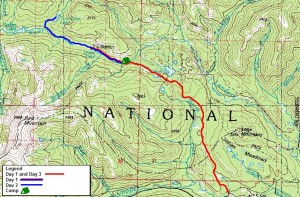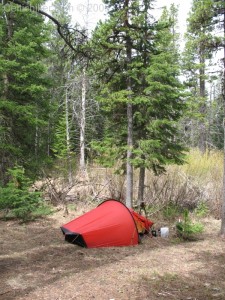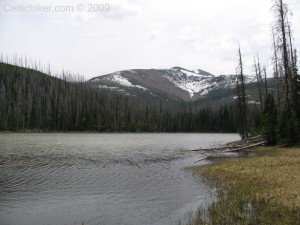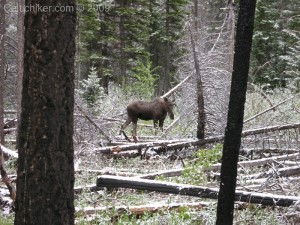-
Recent Posts
Recent Comments
Archives
Categories
Meta
The Quest for the Perfect Setup for On-Line Bagpipe Lessons
Saturday, May 15, 2010
It all starts with an idea
Since I have finally decided to take my piping to the next level and started taking weekly lessons with a very qualified instructor, I have found myself with a new project of sorts. This project stems from the fact that there isn’t a qualified instructor with-in 100 miles or more of my current location, necessitating the use of modern technology, specifically Skype. Now when first considering this, I had put a little thought into what equipment I would need to make this as productive as possible but I wasn’t quite ready for as involved as it became. I think I spent about twice as much time researching things on-line as I did practicing the first few weeks but I believe I finally have a workable setup that seems to be meeting my and my instructor’s needs. This next lesson will confirm if the microphone is finally working as required, but in my initial testing, it seems to have fixed the problem I was having with my previous setups.
So, since it is currently fashionable to assume that someone else could possibly benefit from my undertaking, the following is a list of the equipment I’m currently using and some of the thought process for choosing each item.
Starting at the ground up
The first item needed when considering on-line lessons is obviously a computer with a Internet connection. As with all things computer and Internet related, the faster it is, the better it should work. With this in mind I was initially very concerned with what I was going to use for these two items. I have a Dell Mini 9 as my personal netbook but at the moment I don’t have a more robust machine available for personal use. Lets face it, the specs on the Mini 9 are not really impressive when it comes to memory and processing power so I was very worried that it wouldn’t work.
After conducting some test with the Mini 9, it appeared that it just barely made the grade for making Skype video calls. It required that the netbook be plugged into a wall outlet to give it the extra power it needed and no other programs beyond Skype and the recording software could be running or it wouldn’t pass Skype’s “Computer Speed” test. Once I figured out that it would work I happily moved on to the rest of the issues.
The Internet connection was a major problem for me since high-speed Internet connections are not available at my residence. After figuring out schedules and other issues involved in coordinating a lesson between a teacher in Scotland and a student in Montana, I figured out that I would need a place close to my workplace to have the lessons due to the time of day they would have to occur. Luckily, I was able to find a location that was available at the right time and which had a Bresnan cable Internet connection with plenty of bandwidth available.
So, having determined that the Mini 9 would work for the computer and locating a setting with a great Internet connection I was ready to move on to the rest of the issues.
Without software, a computer is just another rock
In my case, the software to be used, Skype, was chosen by the instructor but this may not always be the case. If another software is requested by the instructor, make sure to test it thoroughly using your full setup before your lessons start to ensure that you don’t waste any more of your valuable lesson time than will be required for setup and tuning between your two locations. With Skype, this process is very easy and the program allows you to test all of your settings and devices to ensure that they are working well for you needs. Other software should have similar features, just check the support page to find out how to conduct setup and testing.
A picture is worth a thousand words
Having taught a number of different subjects over the years, I appreciate the ability to “see” what a student is doing. Figuring that my new instructor would appreciate the same ability, I approached the web cam selection very seriously. Quality of picture was my main concern since the software would impose its own limitations on size and resolution. After spending about 10 minutes reading reviews of various web cams on Amazon, I knew which ones were the top contenders.
For those who may not have experience doing this type of research, start with a generic search using Google for “web cam” then look for the top result from a tech review site. Take note of the date of the review, if its with-in the last month (and it should be if its one of the top results on Google) read the conclusion of the review to note which models its compared to and how it fared. If there is an obvious favorite web cam of the reviewer note its model name or number otherwise just use the model name or number of the device reviewed. Take that info and go to Amazon, type in the name or model number of the web cam you found in the review and when it loads, select one sold by Amazon, not one of the other businesses doing business through Amazon’s site (look for the Eligible for Free Super-Saver Shipping to figure this out). Scroll to to bottom of the page and read the reviews posted. Note the overall numeric rating of the reviews. Are they mostly 4 and 5 or are they split evenly or even worse mostly 1 and 2s? What items are the reviewers comparing this web cam with and do they like this one or the other better? After spending a few minutes browsing through the available web cams, you should have a good feel for what is the current hot sellers out there then it just comes down to finding the best deal on what you want.
Having done this basic research, two web cams were obviously the “latest and greatest” with both having hundreds of positive reviews. After having narrowed it down, I then started looking at price and availability and settled on the Microsoft Lifecam Cinema which was locally available for a cheaper price than what I could find it for on-line. Its specs are readily available on-line for those interested but since these products are always being updated and improved, I would suggest following the above procedure or something similar when you are ready as things will most likely have changed and something newer and “better” will probably be available.
Once I actually had the web cam in hand, I tested it using another laptop and my Mini 9 to call each other. The video being captured and sent over Skype using the Lifecam was crystal clear and I was able to observe finger movements and other small details which I figured would be very helpful for catching those little things that we can slip into and which later become major problems that have to relearned.
Listen up
Obviously, with any type of instruction, you as a student need to listen to the instructor and then follow their directions. In this case, actually hearing the instructor was a major concern. After doing some research on Skype’s forums and other places on-line, I determined that for the best “hearing” experience a set of headphones was the best solution. I then had to figure out which ones to get!
There seem to be hundreds if not thousands of types of headphones out there with all sorts of bells and whistles to make them better then the competitor but I wanted to stay away from really costly models (If you can afford Bose, get them!). I also wanted something that would be comfortable to wear for up to an hour with out taking them off and which would do a reasonable job of cutting down the sound level of the pipes so that I would not need to put in ear plugs while playing. After looking a number of different models, I decided to purchase a set of the Sony noise cancelling headphones. These are “over the ear” headphones and have a very comfy, padded ear piece on each side. The noise cancelling sounded like a good idea at the time I purchased them to help with cutting down the sound of the pipes, but in reality, just wearing the headphones cuts the volume to a very pleasant level (The noise canceling will be handy on planes playing the Techno-pipes, so it wasn’t a total loss).
Again, after obtaining the headphones, I started testing them out. I quickly learned that their cord was not nearly long enough to allow to me move far enough away from the camera to get a good upper torso and pipes framing with the web cam. A quick trip to Walmart produced an extension cord which added almost 16 feet to the cord giving me plenty of room to move.
Sound, its all about the Sound
Although its the last item I am discussing here, it the speaker to be used was actually one of my first concerns and the item I spent the most time researching and changing. From my testing, I knew that the built-in speaker on the Lifecam Cinema was ok for voice and practice chanter, but it was a little overwhelmed by the pipes unless I stood across the room and even then it had occasional issues. I started looking around the web and found a number of suggestions for various mics others were using for these lessons on bobdunsire.com. I then started looking at these mics on Amazon and found that they were almost all at least $150 and that there seems to be a lack of agreement among speaker geeks about what is the best. There were constant major disagreements in the reviews concerning all aspects of the different models. I then decided that my normal method of research wasn’t going to work for this item without first developing a lot of knowledge about microphones and their various settings and adjustments, and I just didn’t have that amount of time or the interest. So I asked the professional musician in the family their opinion of what I would need, first telling them what my concerns and requirements were. I was then advised that I wanted a USB condenser mic and they suggest the Blue Snowball.
I then did my normal research on the Snowball and found that it did seem to be up to the task at hand and that it had received a lot of really positive reviews. I then ordered one from Amazon, got it in hand and began the testing.
In testing between the two computers I was using for all of my testing, the Snowball performed as advertised and its 10db reduction setting was able to easily handle the full pipes from about 5 feet with no distortion while the standard settings worked great for voice and practice chanter. I thought I was set and that I was ready for my next lesson, but I was wrong!
Let me state that I believe that the following problem actually occurred because of Skype’s auto-adjust setting for the microphone and not because the Snowball was having issues. When my next lesson came around, I happily setup the Snowball and informed my instructor of the “new and improved” mic. I then played the pipes and found that the sound on his end was just as distorted as it had been with the built-in mic on the Lifecam. We played around with the settings on the program and the only way to improve the sound was to take off the auto-adjust feature and manually set the volume level. Since the Snowball did not have a gain switch, just the 10db reduction setting, this adjustment had to b done within Skype which was a major pain when trying to juggle a full set of pipes, headphones and using the little touch pad on the Mini 9. We finally had to use multiple layers of a towel over the mic to get the sound level reduced enough on my instructor’s setup so that he could hear what I was playing with out distortion. Since this wasn’t an acceptable solution in my mind, it was back to the drawing board.
In my research of the Snowball, I had noted that Blue had come out with a new and improved model USB condenser microphone that had a number of features that the Snowball was lacking, it also had a $40 higher price tag which is why I initially ignored it. I now went back and the first item I noted was that it had a gain level knob on the body of the mic allowing for easy gain adjustment. It also had a headphone jack built into the mic allowing for zero latency listening to what the mic was receiving and had a whole bunch of other whiz-bang specs (THX certified?) that sounded cool and seemed to justify the extra cost. So I ordered it and made arrangements to return the Snowball (I have to say that Amazon is a great company when it comes to customer service, they were more than happy to help me with the return and made it a very simple process).
Once I had the Yeti sitting on my desk, I began the testing process again. The first thing I noted was that it was possible to take off the auto-adjust setting in Skype and use the gain knob to adjust the level as needed with it being a quick turn from a comfortable voice/practice chanter to a setting suitable for the full pipes. Having the headphones plugged into the mic and the built-in volume adjustment knob for them was an added bonus. So it now appears that I may have finally gotten a winner, but the final decision will have to be made at the next lesson when we find out if it works as well on my instructor’s end as it does on mine!
Updated: After my last lesson, I’m happy to say that the Yeti performed flawlessly! Its adjustable gain allowed for turning down the microphone to change from voice to pipe volume. I did take off the auto-adjust feature of the Skype audio which probably contributed to the solution, but my instructor finally noted the the audio quality was way better than any of the previous settings.
I do have to note one thing concern these two Blue microphones, they are big! In looking at the picture of the Snowball, I was envisioning a small sphere like an older Logitech web cams, I was wrong. The actual mic is the size of a softball, or possibly a little larger, and it is a presence sitting on a desk. Its very stylish and looks great (I really liked the brushed aluminum) but when people come into your office or area where you are using it, they will notice it and have questions about exactly what it is and why its “so big”. Having experienced the Snowball, I was more prepared for the Yeti but it still impressed me. It weighs close to 3.5 pounds and stands 12 inches tall. The stand has a base measuring 4.5 inches across and then the uprights come up 7 inches. The mic itself is 7.75 inches tall and about 2.5 inches wide. Its big, really big! The size and weight are going to make it a little difficult to haul around since it doesn’t fit into the water-proof box I had everything in, but I’m hoping I can find a little larger version that will let me store it with the rest of this equipment in my music bag.
In conclusion
So there you have it, a full setup for utilizing the Internet to take Bagpipe lessons from an instructor half way around the world.
If any additional changes or additions are made, I’ll be sure to update this post.
Tunes from the Coeur d’ Alene Summer School of Piping and Drumming 2009
Wednesday, August 5, 2009
The following are the recordings of the tunes given to the class by our instructor, Rick Helm, at the Coeur d’Alene Summer School of Piping and Drumming, 2009.
All of the tunes were played on the practice chanter by Rick.
Hopefully this will help those in the class who didn’t have a recorder.
To save the files to your computer, right click the file and choose “Save Link As” and then pick the download destination and click “Save”. It will then download the file to your computer so you can listen to it as much as you would like.
Enjoy!
First Hike of 2009
Sunday, June 7, 2009
After months of planning, date picking and very uncooperative weather and schedules, we finally decided on a date and picked two possible destinations for the first hike of the year. We were still unable to get the entire group together due to conflicting schedules, but we were able to get a majority of the main players and the rest were going to hike next weekend with whoever could make both having twice the fun.
Although Renshaw Lake was the more appealing of the two locations, the constantly changing (for the worse) weather forecast and the difference in elevation (because of the snow level) made Webb Lake the final choice for the trip. Although we had day hiked to Webb Lake once before, we had never actually camped in that area and day hiked further into the Scapegoat Wilderness. The weather forecast continued to get worse as the week progressed and finally caused a last minute change in schedule so instead of going in on Friday afternoon, we left a day early to try and get at least a day and a half of decent weather before the snow and cold temps hit.
After completing our mandatory half day at work to wrap things up, we grabbed lunch and then drove over the pass to the Indian Meadows trailhead. The weather was great with temps in the 70s and just a light breeze. The hike in to the junction with the Main Line trail and the trail to Heart Lake was just like it has been the last two years, although the trail was very dry and dusty considering the amount of moisture we have been receiving. At the junction we took the Main Line, left fork, for the first time and were treated to a fairly steep and what seemed lengthy uphill climb before dropping down into the drainage for Webb Lake. The trail had been cleared of all deadfall and, besides the elevation gain, it was a fairly easy hike. After dropping down to the North Fork of the Blackfoot River, we crossed it using a rather bouncy foot bridge of sorts. We then continued to Webb Lake where we found the Forest Service cabin occupied.
The ranger came out and advised us that the area around the cabin was “administrative” and was not available for camping. He advised us that we could camp in the meadow to the west of the lake and advised us that we would have to carry water from the lake. He also advised us that Webb Lake had no fish in it but that Parker Lake had good fishing and was 40 minutes further down the trail. As our group was already split into two smaller groups and I was beginning to think that the second group might be having problems with the distance to this point, Parker Lake was ruled out and the meadow did not sound very appealing. Because of these considerations, we decided to backtrack to the Blackfoot River crossing were there were a number of nice camp sites. Prior to leaving, the ranger reminded us of the food storage rules.
As we were going back, we came to the rest of the group and after explaining the situation, they agreed that the crossing sites were probably the best option. We then returned to the crossing and found a site with enough room for all the tents, great fire wood and right next to the river. We then got camp set up, collected firewood and relaxed. The weather continued to stay nice and between the slight breeze and the smoke from the fire the millions of mosquitoes were made manageable.
Friday dawned clear and sunny (despite the NWS forecast calling for mid 40 temps, overcast and precip) and looked to be a great day. After everyone got up and had their various breakfasts, we began discussing the plans for the day. Back tracking to Heart Lake and looking for a new campsite by some of the smaller, surrounding lakes was ruled out and we then decided to try a day hike past Webb Lake to Two Point Lake.
The trip was an easy hike through mostly new growth forest. The amount of deadfall off the trail was staggering and, although it would make great fire wood, trying to get through it looked like 50 yards an hour would be an exceptional pace. When we reached the trail to Two Point Lake we found it was clearly marked for Landers which according to the map was a stream to the north of the lake. We started up the trail and found that it had not been cleared for the season. Even so, there were less than 10 points where one or more trees were down across the trail and they were all fairly easy to navigate. As we got close to the lake, the trail began to be wet and muddy. We also began to see Grizzly tracks in the mud. We made our way down to the edge of the lake and took some pictures and had a snack. We also watched some ducks having a debate about the local female. The looser, after being chased repeatedly around the lake, finally left and we decided that we would be leaving as well. We could hear something large moving around to the west of the lake but due to the thick undergrowth and trees, we couldn’t see what it was. Although it was most likely an elk or moose, it could have been a bear, there were certainly enough tracks in the area.
We went back down the trail and although we could see Parker Lake to the west we decided to return to camp. The trip back was uneventful and despite the mostly uphill trail it seemed to take about half the time as the trip out.
Since it was still early when we got back to camp, we ate and then began collecting firewood. We managed to collect a pile of wood about 6′ x 4′ x 2′ ranging from small twigs to large logs. We then rebuilt the fire ring which hadn’t been very well constructed when we found it and started a fire about 6pm. We then concentrated on burning the collected wood and managed to create a bed of glowing red coals that completely filled the fire ring and were about 4″ to 5″ deep. At about 12:30 we decided that it had been an impressive fire but it was time for bed. We then extinguished the fire pouring a few buckets of water on the coals and hit the tents. Despite the cold and wet forecast, the temps were still very reasonable and no precip had been seen.
At 6am, I awoke to the sound of snow hitting the outside of the tent. After listening to it for a while I went back to sleep. A short time later I heard the zips and rustles of people breaking camp. I assumed this was the part of our group that needed to get an early start due to having to work that evening, and tried to ignore them and go back to sleep. I did ask if it was really snowing and they said it was but that it wasn’t really sticking. Since I kept waking up, I decided to get up about 7:30 and start getting things ready for the trip out. When I got up I found that there wasn’t any snow on the ground and the tents were just slightly wet from the melting snow. I made breakfast and the rest of the group also got up (although it was pretty early for some of them) and began to get things together for the hike out. As everyone began to get the tents pulled down and stuff put back in the packs, the snow began again. It was more snow pellets than flakes and they didn’t seem to have much moisture in them. After policing the camp to make sure nothing had been left behind, we hit the trail as the snow began to pick up the pace.
The snow was sticking to the ground and trees as we began to climb up towards Heart Lake. Despite the constant uphill grade, we covered the trail fairly rapidly and before I knew it we were at the top of the grade and started down. The snow was still falling heavily and I had collected about an inch on my hat and pack which every now and then would fall down between my back and the pack. I had decided to just stick with the t-shirt to hike in trusting that the grade would keep me warm and it worked out well. We again saw some grizzly tracks on the trail but they didn’t look recent. We didn’t see any other animals until about 500 yards from the trail head where we came to a young bull moose about 20 yards off the trail. It didn’t seem too concerned about us, so after taking some photos, we continued on to the trail head.
We changed, jumped into the truck and headed for town. It had been a great trip despite the doom and gloom forecast and the snow on everything coming out helped make the too-familiar trail look like a different place. We made the trip back without incident and stopped into Big Horn Wilderness Equipment to look at a new pack for one of our group whose pack worked but was too small for a good fit. Then it was home and back to the real world.
Life happens….
Thursday, April 2, 2009
Although it seems we all start projects with the greatest of intentions, life happens.
Many things have occurred over the last few months that would have made great posts to this blog, but since they usually required a large amount of time to deal with and rectify, no time was found to post about them.
So, the blog has remained unchanged and update-less while events and issues have come and gone without comment.
Again, we can all hope that with the acquisition of a new laptop and the possibility of actually obtaining a reliable Internet connection this will change, but only time will really tell…..
A new beginning to an old project
Friday, October 31, 2008
Since the prospect of actually going through all the steps required to make even a simple change to the old site had become too much to even think about, I’m going to give a blog-based site a try for a while.
Hopefully the ease of use and updating will make this a more active site and less of dead space on the net. But only time will tell?






